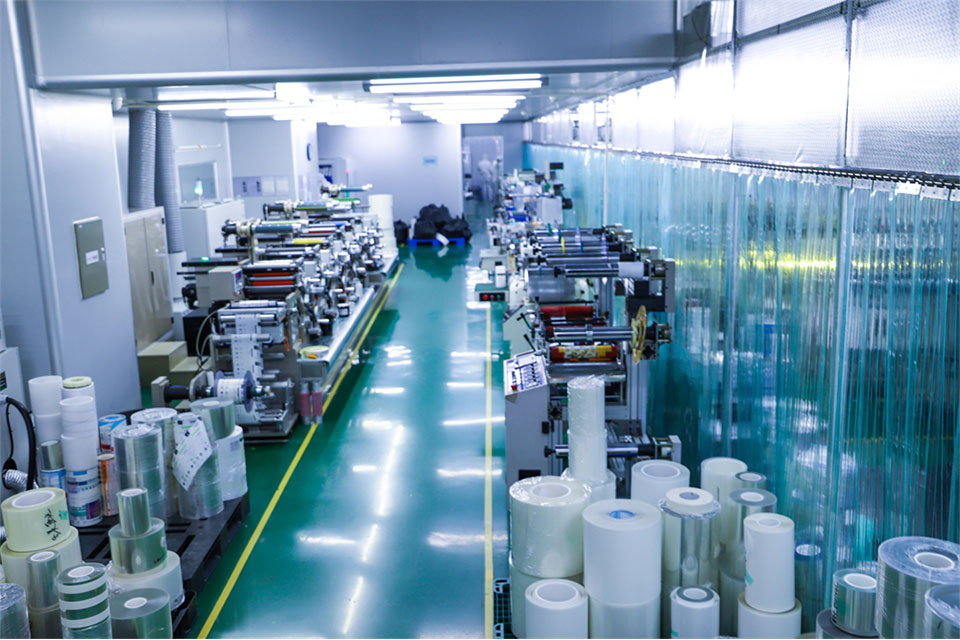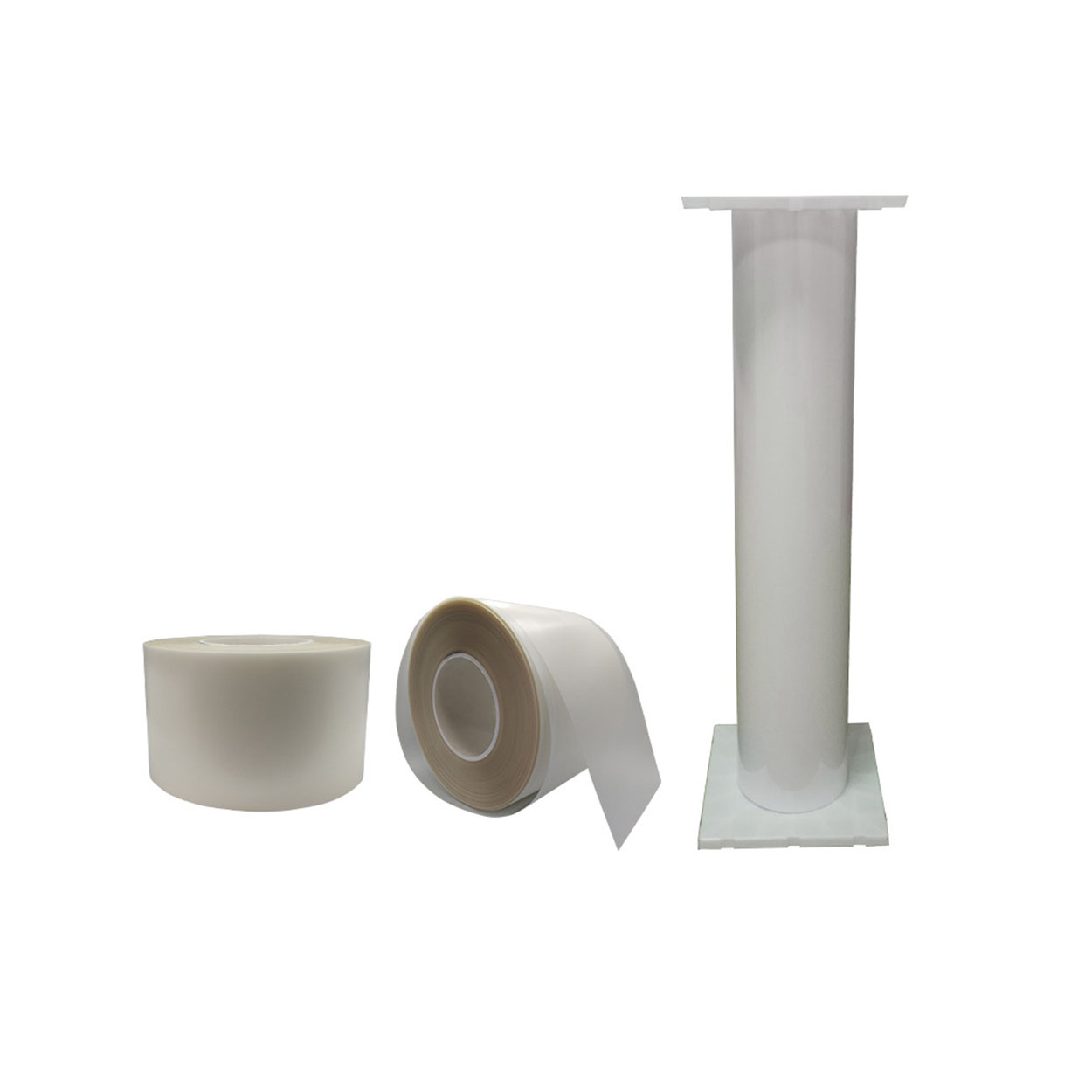
The Benefits of Flexible Hydrogel Films for Wearable Devices
Table of Contents
Extract
Summary
Flexible hydrogel films have emerged as a groundbreaking material for wearable devices, offering a unique blend of biocompatibility, mechanical flexibility, and responsiveness to environmental stimuli. These properties make them ideal for applications in health monitoring and smart textiles, enabling devices to conform to the body while providing real-time physiological data and enhancing user comfort.
. Their ability to mimic the extracellular matrix (ECM) of biological tissues reduces the risk of skin irritation, thereby increasing their safety for prolonged use in direct contact with human skin.. The significance of flexible hydrogel films lies not only in their functionality but also in their diverse applications. These materials are being utilized in innovative health monitoring devices, such as smartwatches and biosensors, that can measure vital signs and detect biomarkers for diseases.. Moreover, advancements in hydrogel technology allow for enhanced drug delivery systems, where hydrogels can modulate drug release profiles based on physiological conditions, offering tailored therapeutic solutions.. Despite their advantages, the integration of flexible hydrogel films into wearable technology does present challenges, including manufacturing complexities, reliability concerns, and user acceptance issues. The intricate processes required for embedding electronics into hydrogels can result in higher production costs, while the performance of these materials can be affected by environmental conditions such as temperature and humidity.. Additionally, data privacy and security issues associated with the collection of sensitive health information further complicate the widespread adoption of these technologies.. As the market for wearable technology continues to expand, with projections exceeding $34 billion by 2020, the development of flexible hydrogel films is poised to play a critical role in shaping the future of health monitoring and personalized medicine. Ongoing research aims to address existing challenges and enhance the performance of hydrogels, making them indispensable in the next generation of wearable devices.
Material Composition
Conductive Nanocomposite Hydrogels
Conductive nanocomposite hydrogels are integral to the development of flexible wearable devices, combining properties from various conductive materials such as carbon-based nanomaterials, polymer nanofillers, metal nanofillers, and emerging 2D materials like MXenes
. These materials enhance the mechanical properties, adhesion, self-healing abilities, and anti-freezing capabilities of the hydrogels, making them suitable for diverse applications in wearable technology.
Fabrication Techniques
The production of e-textiles, which incorporate these hydrogels, employs several methods, including the printing of stretchable circuits using conductive ink composed of metal fragments, and the use of conductive threads or yarns. Coating non-conductive fibers, such as polyester, with conductive materials like gold or silver further facilitates the integration of electronics into textiles
. Traditional fabrication techniques, such as embroidery, sewing, weaving, and knitting, also play a significant role in creating functional e-textiles.
Temperature-Sensitive Hydrogels
Temperature-sensitive hydrogels are another vital category, transitioning between liquid and gel states in response to temperature changes. These hydrogels are especially relevant for tissue engineering applications, as they can be designed to gel at body temperature without the need for chemical stimulants
. Natural polymers, including cellulose and gelatin, alongside synthetic polymers like poly-isopropyl acrylamide, are frequently employed in these systems due to their biocompatibility and biodegradability.
Crosslinking Methods
The formation of hydrogels also depends on various crosslinking methods. Optical polymerization allows for the creation of hydrogels using light-sensitive molecules, which can be advantageous for controlled therapeutic agent release
. Parameters such as monomer concentration, crosslinking agent quantity, and polymerization temperature significantly influence the mechanical properties of these hydrogels, which are crucial for their performance in wearable applications.

Advantages
Flexible hydrogel films offer numerous advantages that make them particularly beneficial for use in wearable devices. These advantages stem from their unique properties, such as biocompatibility, mechanical flexibility, and responsiveness to environmental stimuli.
Biocompatibility
One of the most significant advantages of flexible hydrogel films is their biocompatibility. Composed largely of natural polymers, these hydrogels closely mimic the extracellular matrix (ECM) of biological tissues, making them suitable for applications in tissue engineering and medical devices.
. Their compatibility with cells and body fluids minimizes the risk of adverse reactions, thereby enhancing the safety of wearable devices that come into direct contact with the skin.
Mechanical Flexibility
Flexible hydrogel films possess inherent mechanical flexibility, which allows them to conform to the contours of the human body. This property ensures comfort during wear and enables the device to maintain functionality while in motion. Their soft and stretchable nature helps to reduce pressure points and irritation that could occur with stiffer materials, making them ideal for long-term use in wearable technologies.
.
Responsive Behavior
Hydrogels can be engineered to respond to various environmental stimuli, such as temperature, pH, or moisture levels. For example, temperature-sensitive hydrogels can transition between liquid and gel states based on body temperature, facilitating drug delivery or biosensing applications.
. This responsive behavior not only enhances the functionality of wearable devices but also allows for real-time monitoring and adaptive responses to physiological changes.
Enhanced Drug Delivery
Hydrogels can serve as effective carriers for controlled drug release. Their ability to swell or contract in response to stimuli enables the precise modulation of drug release profiles, which is particularly advantageous in therapeutic applications within wearable devices. This feature allows for sustained and targeted drug delivery, potentially improving patient compliance and therapeutic outcomes.
.
Wound Healing Properties
The water-absorbing capacity of hydrogel-based dressings is another notable advantage. These materials can absorb exudate from wounds, helping to maintain a moist environment that is conducive to healing. Their high absorption capability aids in temperature regulation at the wound site, further promoting healing and minimizing the risk of infection.
.
Applications
Flexible hydrogel films are revolutionizing the landscape of wearable devices by enhancing their functionality and comfort. These materials, which combine the properties of hydrogels with flexible electronics, have a wide range of applications in health monitoring and smart textiles.
Health Monitoring
One of the primary applications of flexible hydrogel films is in health monitoring. Wearable devices such as smartwatches and fitness trackers utilize these films to capture physiological data. Hydrogel-based sensors can measure vital signs including heart rate, blood pressure, and body temperature, providing users with real-time health insights
. This technology allows for continuous monitoring of health conditions, which is particularly beneficial for individuals with chronic diseases.
Smart Textiles
In the realm of smart textiles, flexible hydrogel films enable the creation of E-textiles—fabrics embedded with electronic components. These garments not only provide comfort and style but also facilitate dynamic customization and functionality through embedded sensors
. For instance, smart clothing can detect movement, track physical activity, and monitor biometric data, all while being lightweight and flexible.
Diagnostic Capabilities
Flexible hydrogel films have also shown potential in diagnostic applications. For example, wearable biosensors made from hydrogels can detect biomarkers related to specific health conditions, aiding in the early detection of diseases such as COVID-19
. The ability of these sensors to interact with bodily fluids allows for a more comprehensive understanding of an individual’s health status.
Environmental Interaction
Another significant application is the development of devices that interact with the environment. Hydrogel films can be designed to respond to various stimuli, such as temperature and humidity, enabling the creation of responsive wearable technology. This can enhance user experience by providing personalized feedback based on environmental conditions
.

Performance Characteristics
Flexible hydrogel films offer a range of performance characteristics that make them particularly advantageous for wearable devices. Their unique properties enable effective integration into various applications, particularly in health monitoring and energy storage.
Mechanical Properties
Hydrogels exhibit remarkable mechanical strength and elasticity, allowing them to withstand substantial strain without failure. These materials can endure tensile strains up to 30% while maintaining their integrity over multiple cycles, making them suitable for dynamic applications such as wearable sensors that require frequent bending and stretching
. Their high resilience ensures that they do not delaminate or deform, which is critical for maintaining functionality during use.
Adhesion and Conformability
The adhesion characteristics of hydrogel films are pivotal for their application in wearable devices. These films can adhere to the skin through effective interfacial interactions, significantly enhancing their usability. With the introduction of smart and aqueous hydrogels, the adhesion is further improved, allowing devices to remain securely in place while being worn, which is essential for accurate data acquisition
.
Biocompatibility
Biocompatibility is a crucial factor in the development of wearable health monitoring devices. Flexible hydrogels are designed to be non-toxic and compatible with human skin, minimizing the risk of irritation or adverse reactions during prolonged use. This property is particularly important for devices intended for continuous health monitoring, such as those that track heart rate or glucose levels
.
Electrical Conductivity
Advanced hydrogel formulations can achieve high electrical conductivity, which is necessary for the operation of sensors and electronic components embedded in wearable devices. Conductivity is a vital performance characteristic that enables real-time data transmission, thereby enhancing the functionality of health monitoring systems and other electronic applications
.
Reliability and Robustness
The reliability of wearable devices is significantly influenced by the materials used in their construction. Hydrogel films provide robustness against environmental factors, such as moisture and temperature variations. Their stretchable nature reduces the likelihood of mechanical failure, which is a common issue faced by traditional wearable devices. Early studies indicate that flexible hydrogels can successfully address many reliability challenges, ensuring that devices remain functional over time, even under challenging conditions
.
Challenges and Limitations
The integration of flexible hydrogel films into wearable devices presents various challenges and limitations that must be addressed to optimize their functionality and user experience.
Manufacturing Complexities
One of the primary challenges in the production of flexible hydrogel films is the intricate manufacturing process involved. Techniques such as embedding electronic components into hydrogels require precision and can lead to higher production costs. Various methods for creating e-textiles include sewing, weaving, and knitting, each presenting its own difficulties in ensuring the seamless incorporation of electronics without compromising the material’s flexibility and comfort
.
Reliability Issues
Wearable devices utilizing hydrogel films face unique reliability challenges compared to traditional electronics. Factors such as limited display area, non-conventional shapes, and the abundance of sensor data can contribute to potential software bugs and failure modes. For example, high user interface activity can lead to resource starvation, causing devices to hang or malfunction
. Additionally, issues related to the accuracy of data collection are crucial, especially when these devices are intended for health monitoring or treatment purposes.
User Privacy and Data Security
The use of hydrogel films in wearable technology also raises significant privacy and data security concerns. As these devices often collect sensitive health information, issues related to data consent and third-party access become paramount. Past incidents, such as those involving Google Glass, have highlighted the potential for privacy breaches, where user information was recorded without proper consent, leading to distrust among users
.
Environmental Factors
Environmental conditions, such as temperature and humidity, can affect the performance and longevity of hydrogel films. These materials may exhibit variations in electrical properties under different environmental stresses, impacting their reliability in real-world applications. Continuous monitoring and adaptation are necessary to ensure consistent performance across diverse conditions
.
User Acceptance
Lastly, user acceptance of wearable devices incorporating flexible hydrogel films may be hindered by aesthetic and comfort factors. Users might harbor reservations about the look and feel of such devices, which can influence their willingness to adopt the technology. Therefore, the design must balance functionality with user-friendly features to enhance overall acceptance and satisfaction
.

Future Prospects
Advances in Hydrogel Technology
The future of flexible hydrogel films in wearable devices appears promising, particularly due to ongoing advancements in hydrogel technology. Researchers are increasingly focusing on developing hydrogels that respond dynamically to biological conditions, such as pH levels and temperature changes
. These stimulus-responsive hydrogels could enhance the functionality of wearable devices, enabling more precise monitoring and interaction with the body, especially in applications like controlled drug delivery systems and biosensors.
Integration with Wearable Technology
As the Internet of Things (IoT) continues to expand, the integration of hydrogel-based materials into wearable technology is expected to grow. Wearable devices can leverage the unique properties of hydrogels, including their ability to absorb body fluids and mimic the extracellular matrix (ECM) structure, enhancing user comfort and device performance
. This synergy is anticipated to result in more efficient health monitoring applications, contributing to fields such as chronic disease management and personalized medicine.
Market Growth and Applications
The market for wearable technology is expected to witness substantial growth, projected to exceed $34 billion by 2020
. With increasing consumer interest in health and fitness tracking, the demand for advanced materials like hydrogels will likely rise. Applications may expand beyond traditional fitness tracking to include more sophisticated health assessments, such as continuous monitoring of glucose levels or early detection of infections. The adaptability of hydrogel films could play a critical role in these advancements, making them indispensable in the wearable technology landscape.
Challenges and Research Directions
Despite the potential benefits, several challenges remain in the development of hydrogel films for wearable devices. Issues such as long-term stability, biocompatibility, and the mechanical properties of hydrogels must be addressed to ensure they can withstand the rigors of daily use while maintaining performance
. Future research will likely focus on enhancing the durability and effectiveness of these materials, exploring new formulations and crosslinking methods to optimize their performance in real-world applications.
Comments

Customizing Privacy Screens: Why You Need a Smart Privacy Screen Cutting Machine
The Smart Privacy Screen Cutting Machine represents a significant advancement in privacy technology, offering precise, customizable solutions that enhance data security and user comfort across various settings.

How to Put on a Screen Protector Perfectly: A Comprehensive Guide
Are you tired of botched screen protector applications that leave your phone looking worse than before? Applying a screen protector can be a daunting task, but with the right techniques, you can achieve a flawless finish that enhances your device’s appearance and protection. This guide will walk you through the process of putting on a screen protector perfectly, whether it’s a basic film or a premium tempered glass option. We’ll cover everything from preparation to troubleshooting, ensuring you have all the knowledge needed for a bubble-free, precisely aligned screen protector application.

How to Apply Liquid Screen Protector to Phone
Liquid screen protectors offer a modern, effective way to protect your smartphone.

How to Put a Screen Protector?
By following these steps, you can confidently install a screen protector on your smartphone, ensuring it remains protected and looking new.

Understanding the Cost of Screen Protector Cutting Machines: What to Expect
The growing demand for mobile devices and accessories has made screen protector cutting machines an essential investment for businesses in the industry.
Tags
Find All knowledge and trends from our blog, get the wholesale price and best quality from our factory.

What Film Cutting Machine and Its Application
Film cutting machines have played a crucial role in the evolution of filmmaking and various industrial processes by enabling precise cutting and splicing of film materials.

What Is a Screen Protector Cutting Machine?
A screen protector cutting machine is a specialized device designed to produce custom-fit screen protectors for various electronic devices, including smartphones, tablets, smartwatches, laptops, and monitors.

How Mobile Phone Screen Protector Cutting Machine Work?
A mobile phone screen protector cutting machine is a sophisticated device designed
to produce customized screen protectors for various digital devices with high preci
sion and efficiency.

Characteristics of Mobile Phone Tempered Glass and Mobile Phone TPU Screen Protector
Thermoplastic polyurethane (TPU) screen protectors are flexible, durable, and
self-healing plastic films designed to protect electronic device screens from
scratches, impacts, and other potential damages.

Revolutionize Device Protection with Screen Guard Cutting Machine
Whether you possess a smartphone, tablet, or smartwatch, this versatile machine accommodates a vast array of devices. It seamlessly adapts to the dimensions of your gadget, offering a custom fit that generic protectors can’t match.

Screen Protector Lifetime Warranty
A screen protector lifetime warranty is a guarantee provided by manufacturers that
promises to repair or replace a screen protector for the lifetime of the product, under specific terms and conditions.





